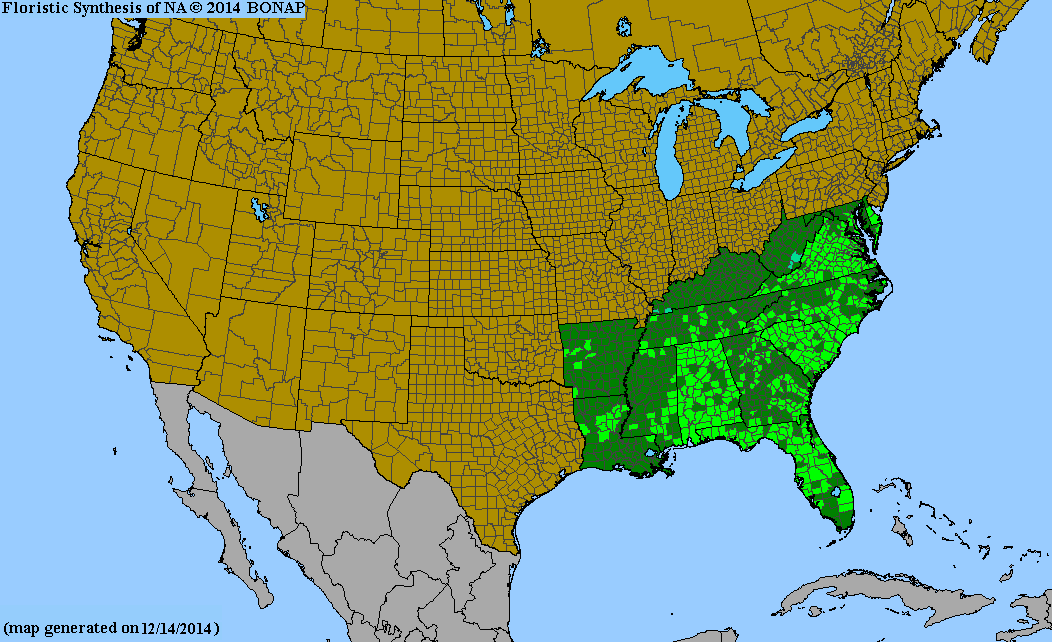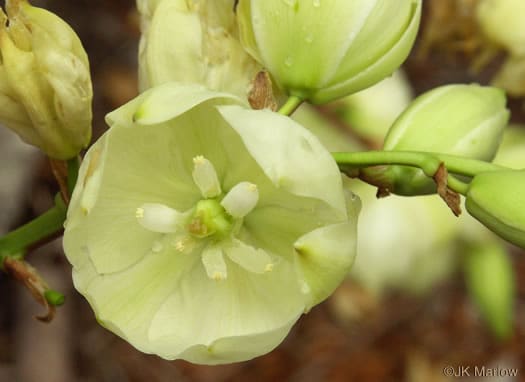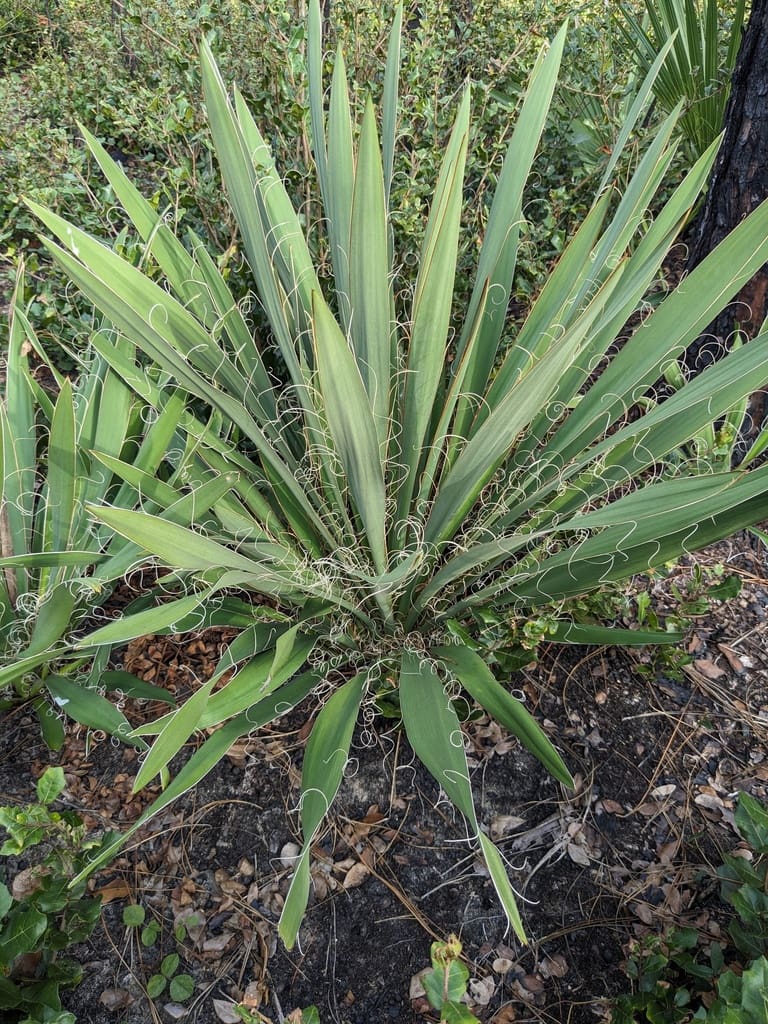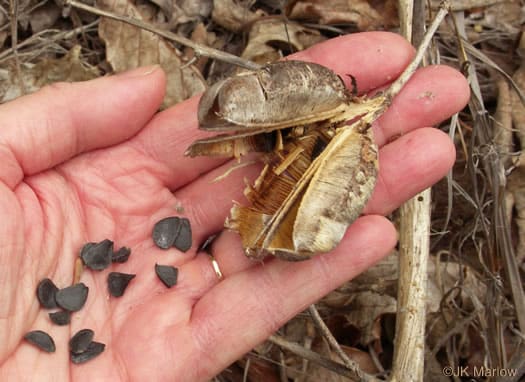Agavaceae
Adam's needle
Yucca filamentosa
Synonyms
Yucca smalliana
Yucca concava
Other Common Names
curlyleaf yucca, spoonleaf yucca
Plant Type
Shrub (less than 10 ft)
Life Cycle
Perennial
Typical Size
3-8 ft. tall
3-5 ft. wide
Tolerant of
Deer, Drought, Salt Exposure
Inolerant of
Poorly Drained Soil
Propagation
By seed, By division
Plant Propagation Notes
Seeds germinate at 60-70 degrees. Offset growths can be divided from the main plant.
Plant Planting Notes
Does best in well drained soil with neutral pH. Provide up to 5 ft spacing.
Plants/Diseases
No significant disease or pest issues.
Wildlife Benefits
Nectar/pollen source for pollinating insects, Host plant for butterfly larvae, Nectar source for hummingbirds
Leaves
Leaves rosulate, lanceolate with entire margins; 6 inches or longer.
Flowers
Large white, showy bell-shaped flowers on tall panicles.
Fruit
Capsule that matures from green to brown/copper.
Toxicity
No known toxicity.
Edibility
Yucca root and flowers are edible.

USDA Hardiness Zones
4, 5, 6, 7, 8, 9, 10
Light Exposure
Full Sun, Part Sun/Shade
Soil Moisture
Dry, Medium
Soil Drainage
Well-drained
Soil pH
Neutral (6.0-8.0)
Native in South Carolina?
Yes
Plant Native Habitat
Dunes, roadsides, disturbed areas, forests, and woodlands.
Global Conservation Status (NatureServe)
Secure (G5)
Federal Conservation Status (USFWS)
Not Listed
Distribution Notes
Common throughout South Carolina.



